#james iv of scotland
Explore tagged Tumblr posts
Text

TUDOR WEEK 2024
It is baaaaack by popular demand!. We are hosting Tudor Week 2024. This is going to be hosted from Monday the 14th of October to Sunday the 20th of October.
The week will go as follows:
Day 1 - Monday, 14th of October: Your Favourite Tudor (members of the family that were born Tudors). Day 2 - Tuesday, 15th of October: Favourite Tudor contemporary quote about or said by the Tudor family. Day 3 - Wednesday, 16th of October: Best Tudor What If? Day 4 - Thursday, 17th of October: Fancast Your Favourite Tudor Family Member. Day 5 - Friday, 18th of October: Favourite Tudor Iconography (e.g. Tudor Rose, Anne Boleyn's falcon, Jane Seymour's Phoenix). Day 6 - Saturday, 19th of October: Favourite Tudor Couple (could include unmarried couples, e.g., Elizabeth I and Robert Dudley). Day 7 - Sunday, 20th of October: Favourite Tudor-related location.
This can cover all events and media that a Tudor family member is present, so from Owen Tudor to Elizabeth Tudor, and may include spouses and acknowledged children of direct members of the Tudor family (if unsure who we cover please check our Family page). We have attempted to make it as broad as possible and no pressure if you are late with some of the days, we will still reblog.
Previous Years: 2021, 2022, 2023
Be sure to tag your posts TudorWeek2024 and DailyTudors, looking forward to seeing your posts!
The Team at DailyTudors
#tudorweek2024#henry vii#henry viii#edward vi#mary i#elizabeth i#owen tudor#catherine de'valois#edmund tudor#margaret beaufort#jasper tudor#catherine woodville#elizabeth of york#arthur prince of wales#katherine of aragon#margaret queen of scotland#james iv of scotland#archibald douglas#henry stuart#anne boleyn#jane seymour#anne of cleves#kathryn howard#catherine parr#mary queen of france#louis xii#charles brandon#henry fitzroy#announcement
157 notes
·
View notes
Text




September 9th 1513 was a sad day for us Scots, we lost our King and thousands more fellow countryman at The Battle of Flodden.
The Battle of Flodden Field was undoubtedly the most famous confrontation between the English and Scots ever fought on English soil. It took place eight miles to the north west of Wooler near the village of Branxton, Northumberland.
The year before sought to renew the ‘auld alliance’ and assist the French by invading northern England, should England wage war on France, which they duly did.
Money and arms were sent to Scotland from France in the following months enabling King James to build up an army for a large scale invasion of England. On the 22nd of August a great Scottish army under King James IV crossed the border.
For the moment the earl of Surrey (who in King Henry ViII.’s absence was charged with the defence of the realm) had no organized force in the north of England, but James wasted much precious time among the border castles, and when Surrey appeared at Wooler, with an army equal in strength to his own.
Now I don't know how accurate this description is so don't shoot me, but it does have a feel of authenticity, it is from Robert White who describes the Scots army, in the Cambridge History of the Renaissance: “The principal leaders and men at arms were mounted on able horses; the Border prickers rode those of less size, but remarkably active. Those wore mail, chiefly of plate, from head to heel; that of the higher ranks being wrought and polished with great elegance, while the Borderers had armour of a very light description. All the others were on foot, and the burgesses of the towns wore what was called white armour, consisting of steel cap, gorget and mail brightly burnished, fitting gracefully to the body, and covering limbs and hands. The yeomen or peasantry had the sallat or iron cap, the hauberk or place jack, formed of thin flat pieces of iron quilted below leather or linen, which covered the legs and arms, and they had gloves likewise. The Highlanders were not so well defended by armour, though the chiefs were partly armed like their southern brethren, retaining, however, the eagle’s feather in the bonnet, and wearing, like their followers, the tartan and the belted plaid. Almost every soldier had a large shield or target for defence, and wore the white cross of Saint Andrew, either on his breast or some other prominent place. The offensive arms were the spear five yards in length, the long pike, the mace or mallet, two-handed and other swords, the dagger, the knife, the bow and sheaf of arrows; while the Danish axe, with a broad flat spike on the opposite side to the edge, was peculiar to the Islemen, and the studded targe to the Highlanders.”
The English commander promptly sent in a challenge to a pitched battle, at Millfield, an area of flat ground three miles north of Wooller, which the king, in spite of the advice of his most trusted counsellors, accepted.
On the 6th of September, however, he instead took up a strong position facing south, on Flodden Edge. Surrey was unhappy for the alleged breach of chivalry. This was at the end of the medieval period, I have pointed out before, battles, in the main, were fought to a code, breaches of which were rare,and so it was a second challenge to fight on Millfield Plain was sent. When Surrey’s herald arrived at the Scottish camp, James refused to meet him and instead sent word that he would not be dictated to by a ‘mere Earl’.
The English commander, at 70 years old was a veteran of many campaigns, then executed a daring and skilful march round the enemy’s flank, and on the 9th drew up for battle in rear of the hostile army.
It is evident that Surrey was confident of victory, for he placed his own army, not less than the enemy, in a position where defeat would involve utter ruin. On his appearance the Scots hastily changed front and took post on Branxton Hill’, facing north. The battle began around 4pm and Surrey’s archers and cannon soon gained the upper hand, the Scots, unable quietly to endure their losses, rushed to close quarters. Their left wing drove the English back, but their reserve corps restored the fight on the auld enemies side.
In all other parts of the field, save where James and Surrey were personally opposed, the English , gradually gained ground. The king’s corps was then attacked by Surrey in front, and by Sir Edward Stanley in flank. As the Scots were forced back, a part of the English reserve force closed upon the other flank, and finally charging in upon the rear of King James’s corps. Surrounded and attacked on all sides, this, the remnant of the invading army, was doomed. The circle of spearmen around the king grew less and less, and in the end James and a few of his nobles were alone left standing. Soon they too died, fighting to the last man.
Among the ten thousand Scottish dead were all the leading men in the kingdom of Scotland, and there was no family of importance that had not lost a member in this great disaster. The “King’s Stone,” said to mark the spot where James was killed, is at some distance from the actual battlefield.
Scottish dead included twelve earls, fifteen lords, many clan chiefs an archbishop and above all King James himself. It is said that every great family in Scotland mourned the loss of someone at the Battle Of Flodden. The dead were remembered in the famous Scottish pipe tune The Flooers o the Forest.
Here is a partial list of those that died, those that know even just a wee bit of our history, through my posts, will recognise the names, if not of the actual knights themselves, but the families that have played such a part in our history.
Sir George Seton, 3rd Lord Seton Sir John Hay, 2nd Lord Hay of Yester George Douglas, Master of Angus Sir David Kennedy, Lord Kennedy and 1st Earl of Cassilis Sir William Graham, 1st Earl of Montrose Sir John Stewart, 2nd Earl of Atholl Sir William Leslie, 3rd Earl of Rothes Sir Archibald Campbell, 2d Earl of Argyll Patrick Buchanan, 16th Chief of Clan Buchanan Sir Robert Erskine, 4th Lord Erskine Sir John Somerville of Cambusnethan John Murray, Laird of Blackbarony Robert Colville, Laird of Hiltoun Sir Matthew Stewart, 2nd Earl of Lennox.
Add to theT, most of their Eelder sons were slain, what is extraordinary though, that of this wee snapshot, none of the lines ended, so there must have been plenty more offspring in Scotland! Let's not forget the thousands of ordinary Scottish soldiers that died on the battlefield that day.
You can read a more detailed account here https://www.britishbattles.com/anglo.../battle-of-flodden/
15 notes
·
View notes
Note
how do you accidentally convince someone you're scottish........
was putting on an accent with some friends and a gal overheard since i'd been talking a while and she was like 'omg ive been to scotland where are you from' and i told her my hometown and she was like 'no where are you From.....' like girl ......... jersey .......
#snap chats#it was funny cause she kept insisting I Was From Scotland like girl no ive never even left the east coast i PROMISE#she kept asking like i was lying like 'no seriously where are you from' like Ma'am I Will Give You The Hospital I Was Born In#sorry i deceived you with my weird ability to mimic accents Adequately#i promise im not playing games the closest i got in me is irish and thats just from my dad's grandpa who ive never met ever#funny as hell .....also why the fuck is it almost time for my last class CAN TIME FUCKING SLOW DOWN#but yeah its even funnier cause if i was ever given the Where Are You From treatment i imagined itd be because my familys filipino#nay .. it just cause i watched too many james mcavoy interviews one week .....
12 notes
·
View notes
Text

Detail of St. Nicholas from a book of hours made in Flanders (probably Bruges), c. 1510-1520 MS 1058-1975
“This volume showcases the final and most exuberant phase of manuscript illumination. It represents the highest point in the development of the Book of Hours, the quintessential text for private devotion and a cornerstone of the European book trade by c. 1500.
Introduction
This Book of Hours combines features typical of manuscripts made for the open market with unique elements designed for the volume’s discerning patron, a Cardinal. Although Books of Hours are often associated with lay women, in fact many were produced for male patrons, both secular and religious. This example demonstrates the crowning achievement of Flemish scribes and artists, the leading suppliers of deluxe manuscripts for local use and for export across Europe. It contains illuminations by two of the most innovative artists of the Northern Renaissance, the Master of the Dresden Prayer Book and the Master of James IV of Scotland.” - The Fitzwilliam Museum
#St. Nicholas#art#flemish#manuscript#bruges#detail#Master of the Dresden Prayer Book#Master of James IV of Scotland
4 notes
·
View notes
Text

King James IV of Scotland (1473-1513). By Edmond Lechevallier Chevignard.
#Edmond Lechevallier Chevignard#kingdom of scotland#king james iv#house of stuart#Rìoghachd na h-Alba#house of stewart#Kinrick o Scotland#equestrian portrait#Kongungdum Skotla#scottish dna#scotland#king of scots
4 notes
·
View notes
Text

King James IV of Scotland (1473-1513) handled this very coin when he personally distributed it as part of a Royal Maundy ceremony in 1512.
This specimen, 1 of just 3 in existence, is from the Lord Stewartby Collection at The Hunterian.
#king james IV of scotland#coins#royal maundy ceremony#1500s#16th century#Lord Stewartby Collection#The Hunterian#university of glasgow#glasgow#scotland
3 notes
·
View notes
Text
The Thistle and the Rose
As much as I pride myself on searching out the stories of unknown and lesser known women from history, Margaret Tudor is not a figure I knew much beyond the basics and the places where her life overlaps that of Henry VIII and Catherine of Aragon. There’s always been a part of me that has had an itch to learn more about the mother and sisters of Henry VIII, so maybe this is the beginning of that…
#16th century#Anglo-Scottish Relations#Archibald Douglas#Battle of Flodden#Battle of Flodden Field#Biography#Book Review#Diplomacy#Elizabeth of York#England#English History#Henry VII#Henry VIII#History#James IV#James V#Linda Porter#Margaret Tudor#Mary Tudor#Nonfiction#Scotland#Scottish History#Tudor#Tudor Era
4 notes
·
View notes
Text
Being sad about King James IV of Scotland
I don't usually care about what happened to historical monarchs but I find myself quite upset for this one. Probably because of how he is portrayed in the (non fiction) book I'm reading but also maybe because he was one of very few people who could give Henry VIII a proper headache.
On the plus side, it was Catherine of Aragon, daughter of Isabella I of Castille, and much more interesting woman than she is usually remembered as, who technically beat him. And it was James IV's heirs who took over the English throne after Elizabeth I.
Not really got anyone to talk to about this. Might as well post into the Tumblr void as anywhere else. You never know, the emotional fallout of the Battle of Flodden 1513 might be someone else's interest here as well...
#British history#I have a complicated relationship with Scotland#But James IV has caught my imagination like no other real king#Fatal Rivalry#George Goodwin
0 notes
Text
Here's a remade masterpost of free and full shakespeare adaptations! Thanks @william-shakespeare-official for this excellent post. Unfortunately, a lot of the links in it are broken, so I thought I'd make an updated version (also I just wanted to organize things a bit more)
Antony and Cleopatra: ~ Josette Simon, Antony Byrne & Ben Allen - 2017
As You Like It: ~ At Wolfe Park - 2013 ~ Kenneth Brannagh's - 2006
Coriolanus: ~ NYET Alumni - 2016 ~ Tom Hiddleston - 2014 ~ Ralph Fiennes - 2011
Cymbelline: ~ Michael Almereyda's - 2014
Hamlet: ~ David Tennant - 2009 ~ Ethan Hawke & Diane Venora - 2000 ~ Kenneth Branagh's - 1989 ~ BCC's Part One & Two - 1990 ~ Broadway - 1964 ~ Christopher Plummer - 1964 ~ Laurence Olivier's - 1948
Henry IV: ~ BBC's Part One & Two - 1989 ~ The Brussel's Shakespeare Society's - 2017
Henry V: ~ The BBC's - 1990 ~ Laurence Olivier's - 1944
Julius Caesar: ~ Phyllida Lloyd's - 2019 ~ The BBC's - 1979 ~ John Gielgud - 1970
King Lear: ~ The RSC's - 2008 ~ Laurence Olivier - 1983 ~ The BBC's - 1975 ~ James Earl Jones - 1974 ~ Orson Wells - 1953
Love's Labour's Lost: ~ Calvin University - 2016
Macbeth: ~ Stockbridge Drama Society's - 2019 ~ The RSC's - 2019 ~ Antoni Cimolino & Shelagh O'Brien's - 2017 ~ Ian McKellen & Judi Dench - 1969 ~ Sean Connery - 1961
Measure for Measure: ~ Hugo Weaving - 2019 ~ The BBC's - 1990
The Merchant of Venice: ~ Al Pacino - 2004 ~ Trevor Nunn & Chris Hunt - 2001 ~ The BBC's - 1980 ~ Lawrence Olivier - 1973
The Merry Wives of Windsor: ~ The Royal Shakespeare Company's - 1982
A Midsummer Night's Dream: ~ Oliver Chris & Gwendoline Christie - 2019 ~ City of Columbus's - 2018 ~ Julie Taymor's - 2014 ~ The Globe's - 2013 ~ The BBC's - 1988 ~ Lindsay Duncan & Alex Jennings - 1986
Much Ado About Nothing: ~ Shakespeare in the Park - 2019 ~ Kenneth Branagh - 1993 ~ The BBC's - 1984
Othello: ~ The BBC's Part One & Two - 1990
Richard II: ~ David Tennant - 2013 ~ Deborah Warner's - 1997 ~ The BBC's - 1978
Richard III: ~ Ian McKellen - 1995 ~ Laurence Olivier - 1955
Romeo and Juliet: ~ Simon Godwin's - 2021 ~ The BBC's - 1988 ~ Laurence Harvey & Susan Shentall - 1954
The Taming of the Shrew: ~ Ontario production? ~ American Conservatory Theater - 1976 ~ Richard Burton & Elizabeth Taylor - 1967 ~ Mary Pickford & Samuel Taylor - 1929
The Tempest: ~ Gregory Doran's - 2017 ~ The BBC's - 1988
Timon of Athens: ~ Barry Avrich's - 2024
Troilus and Cressida: ~ Audio Production ~ This one I found on youtube? - 2016
Titus Andronicus: ~ Anthony Hopkins - 1999
Twelfth night: ~ Texas Shakespeare Festival's - 2015 ~ Alec Guinness, Joan Plowright & Ralph Richardson - 1970
Two Gentlemen of Verona: ~ Katherine Steweart's - 2018 ~ The BBC's
The Winter's Tale: ~ Antony Sher - 1999 (Warning: they don't have a bear...)
Bonuses:
Time Loop Hamlet! (A personal fav of mine)
Rock Opera Hamlet???
Shakespeare animated tales
The Complete Works Of Shakespeare Abridged comedy
Romeo and Julieta: A Día de los Muertos Love Story
There’s also many other Latine Shakespeare adaptations listed in this archive
MacChef, a retelling but well... in a kitchen!
From the original post:
A Midwinter's Tale, about a man trying to make Hamlet.
Russian Hamlet here
Here's Scotland, PA, the 2001 modern Macbeth retelling.
Rave Macbeth for anyone interested is here.
This one is the Taming of the Shrew modern retelling.
The french Romeo & Juliet musical with English subtitles is here!
Here's the 1948 one,
the Orson Wells Othello movie with Portuguese subtitles there
A Lego adaptation of Othello here.
Here's commentary on David Tennant's Richard II
#phew! this took me like four hours#btw please lmk if any of y'all have tennant & tate's Much Ado anywhere#been searching everywhere#anyway! yeah#big thanks to everyone who recommended some of these versions to me#and dude. shakespeare official. you did an incredible job compiling all this in the first place#i was originally just gonna add on to the post#but it already had so much going on that i wanted to take it somewhere else for a fresh start#shakespeare#fresh from the river#save#mini banger#humble banger
3K notes
·
View notes
Text
Tudor Week 2023

To celebrate our belated three-year anniversary we are hosting Tudor Week 2023. This is going to be hosted from Monday the 31st of July to Sunday the 6th of August.
The week will go as follows:
Day 1 - Monday, 31st of July : Favourite Tudor Rivalry Day 2 - Tuesday, 1st of August : Favourite Female Tudor Family Member Day 3 - Wednesday, 2nd of August : Best Tudor Myth Day 4 - Thursday, 3rd of August : Favourite Male Tudor Family Member Day 5 - Friday, 4th of August : Most Used Tudor Related Resource Day 6 - Saturday, 5th of August : Favourite portrayal of a Tudor Family Member Day 7 - Sunday, 6th of August : Favourite Tudor Mentor and Mentee relationship (can be a Tudor familial relationship, or a Tudor and a courtier relationship)
This can cover all events and media that a Tudor family member is present, so from Owen Tudor to Elizabeth Tudor, and may include spouses and acknowledged children of direct members of the Tudor family (if unsure who we cover please check our Family page). We have attempted to make it as broad as possible and no pressure if you are late with some of the days, we will still reblog.
Previous Years: 2021, 2022
Be sure to tag your posts TudorWeek2023 and DailyTudors, looking forward to seeing your posts!
- The Team at DailyTudors
#tudorweek2023#henry vii#henry viii#edward vi#mary i#elizabeth i#owen tudor#catherine de'valois#edmund tudor#margaret beaufort#jasper tudor#catherine woodville#elizabeth of york#arthur prince of wales#katherine of aragon#margaret queen of scotland#james iv of scotland#archibald douglas#henry stuart#anne boleyn#jane seymour#anne of cleves#kathryn howard#catherine parr#mary queen of france#louis xii#charles brandon#henry fitzroy#announcement
141 notes
·
View notes
Text
Fantasy Guide to the Death of Monarchs
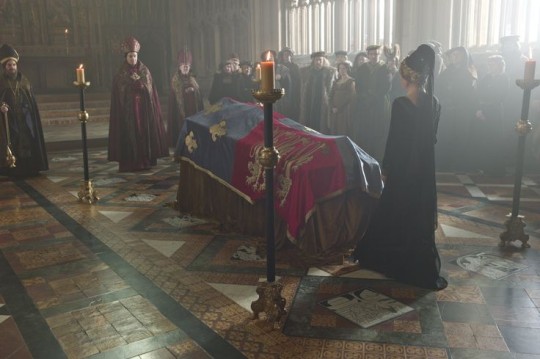
(no, unfortunately this is not a how to guide. Special Branch can now unhitch from outside my house)
To quote The Lion King... The Circle of Life. Monarchs are born, they live, they die. But what exactly happens when a monarch dies?
Dying
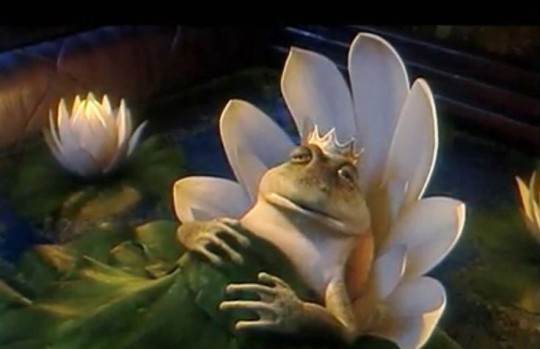
The monarch is on their deathbed. Their family, their friends, their advisers (their bit on the side sometimes) are lingering in the room or in the corridor. But of course, death isn't always expected. Usually, if the death is sudden, such as during a military campaign or an assassination, there is a scramble to preserve the news of the death for a time in order to make the necessary arrangements.
Causes of Death

"... Let us sit upon the ground. And tell sad stories of the death of kings; How some have been deposed; some slain in war, Some haunted by the ghosts they have deposed; Some poison'd by their wives: some sleeping kill'd; All murder'd," - William Shakespeare, Richard II.
Monarchs die like everybody else. They can die from anything. Disease (Alexander the Great), death at war (Richard I), assassination (Philip III of Macedonia), old age (Elizabeth II), starvation (Richard II), misuse of a hot poker (Edward II), murder at the hands of family (Edward V), childbirth (Jadwiga of Poland), accident (William of Orange... Pussy) , poison (Emperor Claudius) or on the toilet (George II). The death of a monarch is something at will be contested sometimes. If the body is not seen, there may be a belief that they live on. If the monarch dies suddenly, there may be rumours of foul play. No matter how a monarch dies, it will lead to uneasiness.
After Death
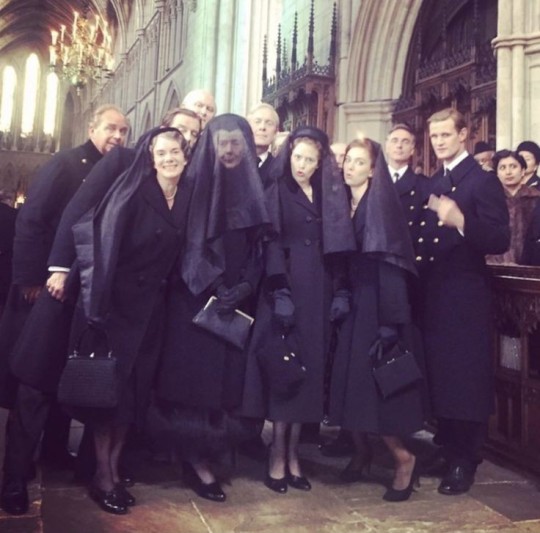
The steps after the monarch dies, usually include securing the next heir, proclaiming them to the people, and then working toward a clean succession. This time is delicate, it can be the breeding ground of coups and treacheries. Any claim other than the designated heir must be silenced by the proclaimation of the next sovereign as soon as possible. Child monarchs are extremely at risk during this period as the adults around them will seek to take custody of them. They who hold the monarch hold the power. It is imperative that the heir be notified at once so the stability of the kingdom can be assured.
The X is dead, Long Live the Next Guy

Once they breathe their last, all attention will turn to the next monarch or the scramble to find one. Be it by succession by blood or an election, the designated successor will immediately (even in the absence of a coronation) become the next monarch. Likely they will have been near their predecessor, either at their bedside or at least in shouting distance. But if they are away, they will quickly return to claim their throne. Without delay. Elizabeth II was actually on royal tour when she recieved news her father had died, leading to a hasty scramble back home.
When things don't go according to plan
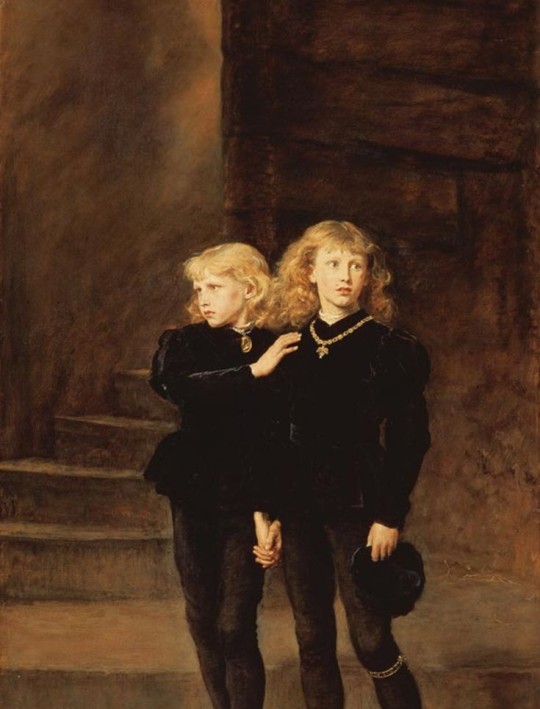
The monarch passes away. There are tears. Sometimes. There are sometimes coups as I mentioned. Young would be monarchs could be kidnapped, eg. Edward V. Another heir claims the throne instead of the designated heir, eg Lady Jane Grey and King Stephen. Monarchs who die on battlefields can have their bodies stolen (James IV of Scotland) or thrown into a ditch with their crown snatched (Richard III). The death of a monarch is a delicate time and dangerous for all royal family members. In some instances, it would lead to murder. If a son of a previous Ottoman Sultan wished to be the next Sultan, they would order the mass murder of their brothers upon their father's death - usually death by strangulation.
Funeral
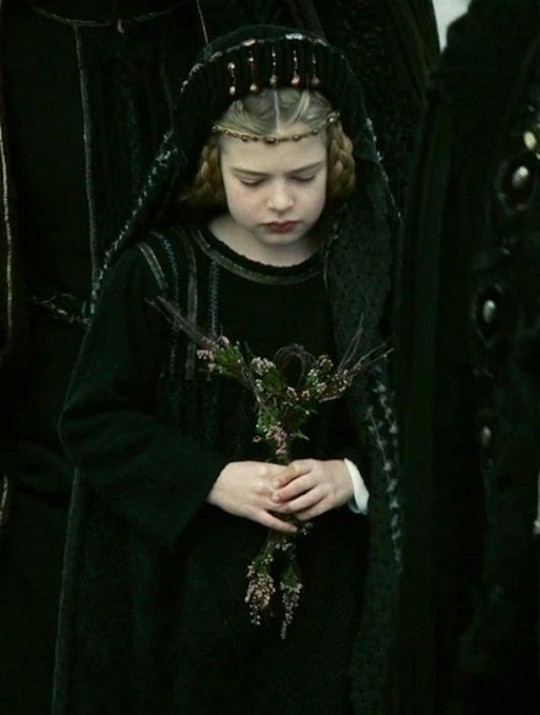
The funeral of the monarch is something that is usually planned from day one. There would be some sort of plan in place for the funeral, the when, the where and the how. The monarch might know these plans but the upper rank of courtier and aides would know. Funerals would follow a certain pattern, likely adapting from previous funerals. They would be a public, a lavish ceremony that would see to the closure of businesses, entertainment venues, the arrival of foreign dignitaries and a long procession of the body surrounded by military forces, watched over by the grieving public. If they actually liked the monarch. Some deaths of Kings were met without any sadness such as George IV. There might also be lavish games thrown in the monarch's honour.
Mourning
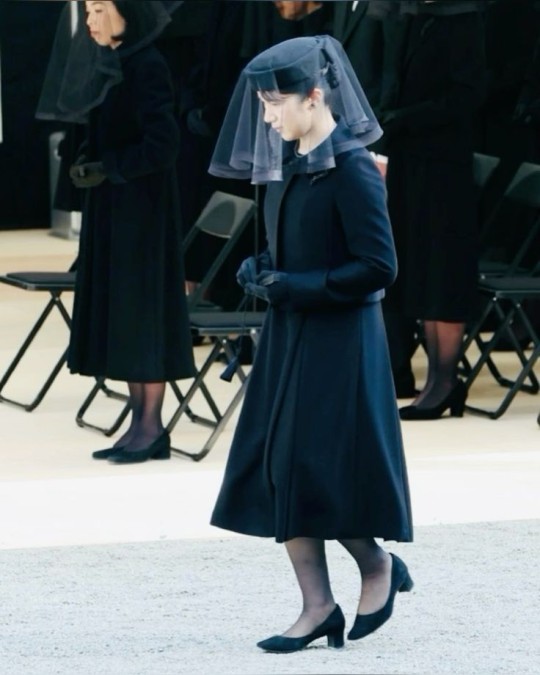
Mourning is the period of time that the country, the court and royal family grieves publicly. It can last a week or so, like today. Or up to a year. In China, sometimes mourning lasted 3 years or more. Mourning period often came with strict rules about what one could do or dress in. In Edwardian times, there were stages in mourning. Full mourning could last up to a year, with women wearing black with very little ornament and widows covering their hair with bonnets of veils. Second mourning (6-9 months), women's clothes could be adorned with trimming and finally half mourning is the 3-6 month period where colour started to be reintroduced, restricted at first to greys and mauves. There would be no balls, no parties, no sporting during the deepest part of mourning.
#Fantasy Guide to death of a monarch#Death of Monarchs#writing#writeblr#writing resources#writing reference#writing advice#writer#spilled words#writer's problems#writer's life#Writing guide#Writer research#Writer resources#Royal funeral#Royalty#Royal#Royalty and nobility
384 notes
·
View notes
Note
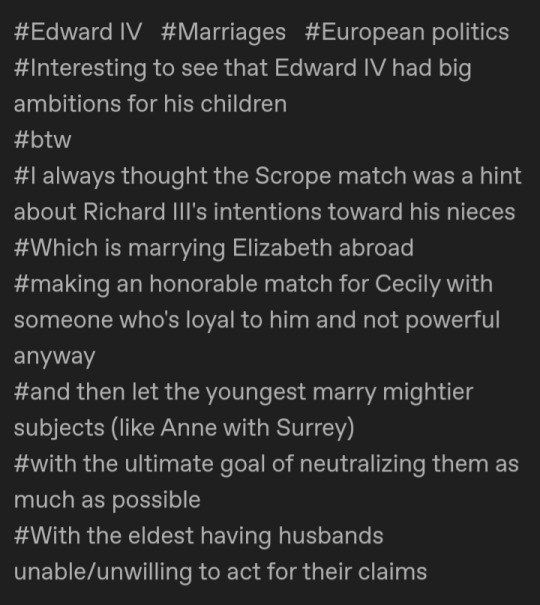
Hi! I'm trying to read up on the York princesses' early lives and I can find frustratingly few details on the same. I was specifically curious about their various childhood betrothals that ultimately never came into fruition due to the death of their father, but I can barely find anything online beyond the bare basics (essentially: the names of the people they were betrothed to). I was wondering of any specific details of all their individual betrothals survived, and if they changed across the years of their father's reign?
And in Bridget of York's case - since she's more elusive to find than her sisters - was she destined for a church path since birth? I've seen some sites claim that her grandmother Cecily Neville named her with no actual evidence beyond her piety, but I always assumed it was her parents who was more likely to have done so? Both Elizabeth Woodville and Edward IV were connected to St. Bridget and Elizabeth was also very pious.
You know a lot about this era so I hope it's okay to ask, sorry if the question seems out of the blue!
Hello! Sorry for taking so long to reply, I had to sit down and look up some things because the story of the betrothal of Edward IV's daughters is quite murky. I will talk about the betrothals that were done during Edward IV's reign because after that it's another thing entirely.
Let's talk about Bridget first. Was she destined for a church path since birth? There's no way of actually knowing this, but it's entirely possible she was. On a practical level, as the king's fifth surviving daughter, a competitive dowry to be used in a foreign marriage alliance would be hard to achieve (more about Edward IV and dowries in a second). More concrete evidence though does come from her name. I haven't found many noblewomen named Bridget in late medieval England but the one I did find, Bridget Holland (daughter of Thomas Holland 2nd Earl of Kent, Richard II's half-brother), indeed became a nun. Like Bridget of York, she seems to have been the youngest of 5-6 sisters.
Saint Bridget of Sweden was a very popular saint in England and she was especially revered by the English royal family (who since Henry V's time were patrons of a Bridgettine monastery at Sheen, Syon Abbey). Elizabeth of York and Margaret Beaufort would go on to commission the printing of a list of prayers popularly thought to have been written by St Bridget. For the Yorkists, however, St Bridget held particular importance because one of her prophecies had been used to justify Edward IV's right to rule. Cecily Neville in particular owned a copy of St Bridget's revelations which she later bequeathed to her granddaughter Anne de la Pole who not only also became a nun, but rose to the highest rank of prioress at Syon.
Cecily Neville was Bridget of York's godmother. Traditionally, godparents were the ones to name ('christen') the child at their baptism. Of course, most time the parents had their input too before the child was brought to the baptismal font. Elizabeth Woodville was also devoted to St Bridget. Interestingly, Cecily left her religious books to the two granddaughters who became nuns: Anne de la Pole, which I commented on above, and Bridget. Bridget received Cecily's Legenda Aurea (a collection of saints' lives), a book about St Katherine and another one about St Matilde.
To me, it seems entirely possible that Cecily Neville might have planned Bridget's career as a nun from the very beginning. It's quite likely that Edward IV and his wife Elizabeth vouched for the idea too, considering how important St Bridget's prophecy had been for Edward's legitimisation as king, they might have made a promise/vow to dedicate one of their children's lives to the Church as many catholic people still do today. I've seen the speculation that Bridget was sickly/had some kind of impairment from birth that would make her less desirable in the marriage market but I don't think we need that as a reason for her going into a convent.
Now going into the other princesses. We already know about Elizabeth of York, right? First, she was betrothed to Warwick's nephew and heir, George Neville, as a way to appease him in 1469. Then she was offered to Prince Edward of Lancaster but Margaret of Anjou went on to choose Anne Neville which was probably for the best, as Edward IV's suggestion, at a time when Edward V was about to be born, was probably just a ruse. Elizabeth's hand was also used as bait to bring back Henry Tudor to England in 1476. And again, it most certainly was a ruse as by that time she had just recently been betrothed to the Dauphin of France. She would be known as Madame la Dauphine until France called off the betrothal in late 1482.
Mary of York occupied 'the rather unfortunate position' as Ross describes it, of being her sister's replacement in the marriage alliance with France in case Elizabeth of York died before the wedding took place. It would not be until 1481, by then a time when many doubted the French marriage would even go through, that Mary was betrothed to King Frederick I of Denmark. She would die the next year in 1482.
Anne of York was first suggested to marry Philip, the future Duke of Burgundy, in 1480 as a part of a tentative Anglo-Burgundian alliance against France that Burgundy desperately wanted but that Edward IV only toyed with to pressure France into honouring their marriage alliance and wed Elizabeth of York and the Dauphin Charles. In the words of Charles Ross, Edward IV's biographer:
Edward quite ruthlessly exploited the duke’s desperate need of English support to get Anne’s marriage on the cheap. Maximilian had wanted a dowry of 200,000 crowns with Anne; Edward, on the other hand, regarded paying no dowry as part of the price of signing an alliance with Burgundy. When Maximilian argued that it was quite unreasonable for the bride of one of the wealthiest heirs in Europe to have no dowry at all, he still had small success in persuading her father to release the purse-strings. The original marriage treaty, signed on 5 August 1480, was modified by supplementary agreements on 14 and 21 August, which effectively released Edward from paying any dowry on condition of releasing to the duke the first year’s instalment of the pension of 50,000 crowns which he was demanding from Burgundy.
Here we must remember that Edward IV wanted to marry Elizabeth of York without paying any dowry at all. On the contrary, France was to pay for Elizabeth's upkeeping until she was married to the Dauphin. Edward IV, whilst dealing with Brittany to marry his son Edward to Anne of Brittany, heiress to her father's duchy, established that if the Duke of Brittany had a son before their children married, one of his daughters was to marry the duke's new son, and that Brittany—not him—were to provide his daughter's dowry. Ross cites a Breton scholar that snarkily remarked that ‘to marry his daughters without dowries was the objective which this miser [Edward IV] set before himself in the last years of his life’. Harsh.
However, Edward IV did agree to pay Cecily's dowry! Although admittedly it was much cheaper (20,000 crowns) than Edward IV himself was asking for Anne of Brittany's hand in marriage to his son (100,000 crowns as the heiress of Brittany, 200,000 in case her father had a son). Cecily of York was first betrothed to James III's heir, the future James IV, in 1473 as part of a truce between England and Scotland that allowed Edward IV to go to war against France in 1475. The truce with Scotland fell through by 1480 and by 1481 Edward IV was committed to a war against James. The next year Edward was willing to back James III's brother Alexander against him, with the condition that Alexander was to marry Cecily ‘if the said Alexander can make hymself clere fro all other Women, according to the Lawes of Christian Chyrche’.
Alexander backed down after the English invasion of Scotland, and James III once again suggested Cecily marry his son and heir as part of the peace terms but Edward IV called off the betrothal for good later that year and demanded the repayment of the dowry portion he had already paid to Scotland. It seems Edward had decided to renew the war against Scotland by that time (November 1482) and back Alexander as king again. Amazingly, Alexander would go on to make peace with his brother yet again in early 1483. So by the time Edward IV died, Cecily's betrothal to Scotland's heir was cancelled for good. Richard III would wed her to Ralph Scrope, Baron Scrope's second son and a man that was part of Richard III's northern affinity.
I haven't found anything about Katherine of York's betrothal during her father's reign. She was probably too young, being born in 1479. EDIT: There was a plan for Katherine to marry Isabella of Castille's heir Juan as proposed in 1482. See reblog in the notes.
And that's it! Basically, Louis XI's peace treaty with Burgundy in December 1482 frustrated at least two of Edward IV's marriage plans. The Dauphin of France would marry Margaret of Austria (Mary of Burgundy's daughter) instead of Elizabeth of York. On the other hand, Burgundy, no longer in need of Edward IV's help, was under no obligation to go through with the marriage of Anne of York and the young Philip of Burgundy. Edward IV's falling out with Scotland also meant Cecily's betrothal was called out.
By the time Edward IV died the only betrothal that was likely to go through was Prince Edward's with Anne of Brittany, so whenever I see people saying that if it wasn't for Edward's death Elizabeth of York would be queen of France, Cecily queen of Scotland, Anne duchess of Burgundy etc I can only assume the person saying that doesn't know much about the upheavals of the 1480s — or Edward IV's own disinclination to pay dowries for the marriages of his daughters.
I hope this answer was of some help, and once again, sorry for taking so long to reply.
#Edward IV#Bridget of York#Elizabeth of York#Mary of York#Anne of York#Cecily of York#Edward V#Anne of Brittany#Maximilian I Holy Roman Emperor#James III of Scotland#Alexander Stewart Duke of Albany#Katherine of York#Isabella I of Castile#Charles Ross#Quotes
64 notes
·
View notes
Text


THE KING'S SISTERS
Margaret and Mary, Princesses of England, were daughters of Henry VII, King of England, and Elizabeth of York, Queen of England, making them the sisters of Arthur Prince of Wales and Henry VIII, King of England. Margaret became the Queen Consort of Scotland by her first marriage to James IV of Scotland, becoming Dowager Queen of Scotland after his death and at times Queen Regent of Scotland on behalf of their son James V, King of Scotland their only child to reach adulthood. On the occasion of her second marriage to Archibald Douglas, Earl of Angus she became the Countess of Angus, they had one child Margaret Douglas who grew up in the court of her brother, Margaret's marriage to Angus ended in divorce which Margaret instigated and successfully obtained at the astonishment of courts abroad including her own brothers. By her third marriage to Henry Stewart, Lord Methven she became Lady Methven no issue came of this union. Through her son, she became the grandmother of Mary I, Queen of Scotland commonly known as Mary, Queen of Scots who was later executed by her niece Elizabeth I of England. Through her daughter, she was the grandmother of Henry Stuart, Lord Darnley and Charles Stuart, Earl of Lennox. She was the great-grandmother twice over of James VI of Scotland and I of England making her the ancestress of all monarchs of England and then Great Britain. Mary became the Queen Consort of France by her first marriage to Louis XII of France, their marriage only lasted two months and three weeks (shorter than any of her brothers' marriages) with the sudden death of her husband, she then became Dowager Queen of France no issue came from this union. Her second marriage was to Charles Brandon, Duke of Suffolk making her the Duchess of Suffolk, their marriage caused quite a stir as Henry wanted to arrange another marriage of alliance for her and Henry's court did not want to grant more power to her husband. They later married a second time in the presence of her brother once welcomed back in her brother's court. They were married for eighteen years and she often took her husband's side on major issues of Henry's reign including being outspoken against his want and later marriage to Anne Boleyn, as well as Anne's character and actions. Her marriage to Charles produced four children with two daughters reaching adulthood Frances and Eleanor. Per the Act of Succession 1536 (three years after her death), her heirs took precedence over her elder sisters and were next in line to the English throne after her brothers. Through Frances Mary was the grandmother of Jane Grey, Queen Regnant of England who was made the heir of Edward VI over his sisters, Jane was later executed by Mary's niece Mary I of England. Mary's other Grey granddaughters Catherine and Mary also were points of contention during Elizabeth I's reign.
[As portrayed by Georgie Henley and Sai Bennett in Starz The Spanish Princess]
#the spanish princess#thespanishprincessedit#perioddramaedit#georgie henley#sai bennett#margaret tudor#mary rose tudor#mary tudor#my edits
83 notes
·
View notes
Text

Coronation Ring
Gold coronation ring mounted with a large, flat-cut ruby engraved with the cross of St George with foil behind, surrounded by 26 diamonds set in silver. The ring of polished gold with engraved scrollwork, with engraved shoulders and adjustable shank.
The provenance of this ring remains confused. In 1807, it was bequeathed to George IV, then Prince of Wales, by Cardinal Henry Stuart. At this date it was described in a letter, later transcribed by the Marquess of Abergavenny as 'a ruby ring surrounded by brilliants. On the ruby a cross is engraved. It was used on the coronation day of the Kings of Scotland'.
A second paper listed by Abergavenny apparently described the same ring and proclaimed that it may have been used by James I as well as James II. The ring was certainly used at the coronation of James II since it was clearly drawn among the illustrations of Sandford's publication and described as 'a plain Gold Ring, with a large Table Ruby Violet wherein a plain Cross or Cross of St George, was curiously Enchased'.

~ Royal Collection Trust
83 notes
·
View notes
Text

James IV of Scotland as a boy. Unknown artist.
#kingdom of scotland#house of stuart#house of stewart#king james iv#king of scotland#Rìoghachd na h-Alba#Kinrick o Scotland#Kongungdum Skotla#engraving#royalty#engravings
2 notes
·
View notes
